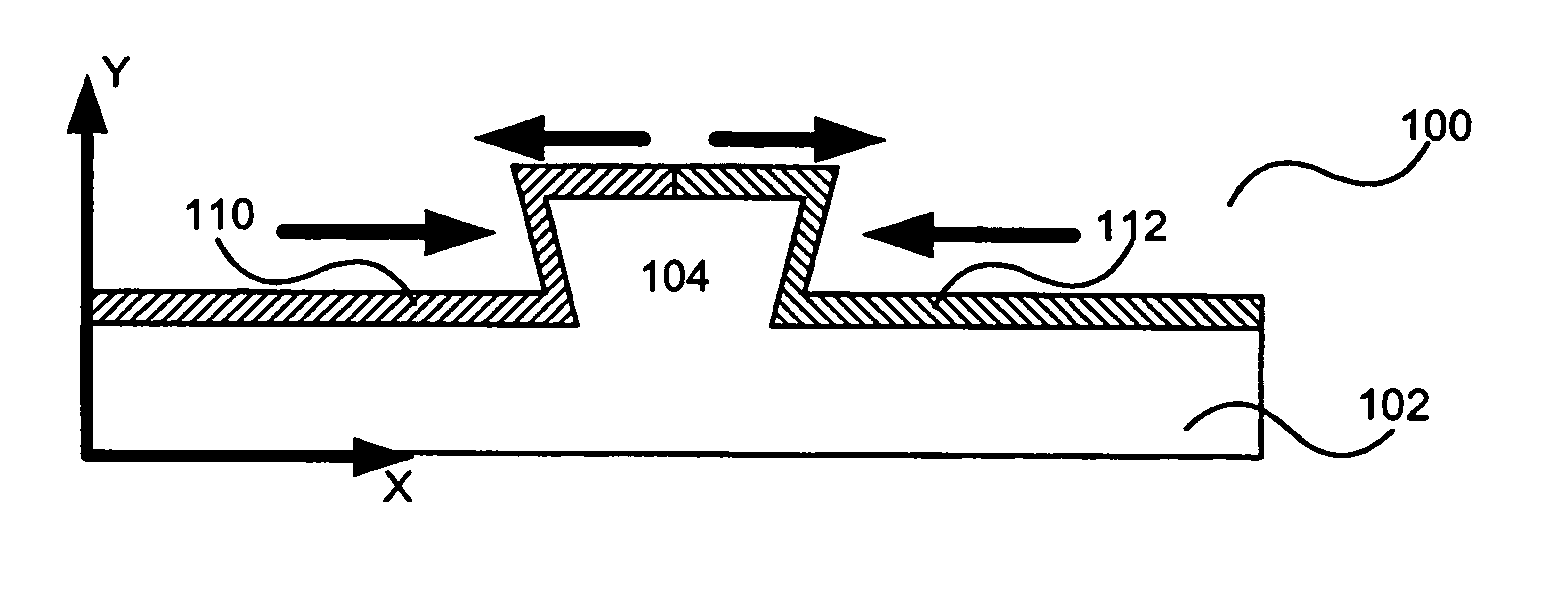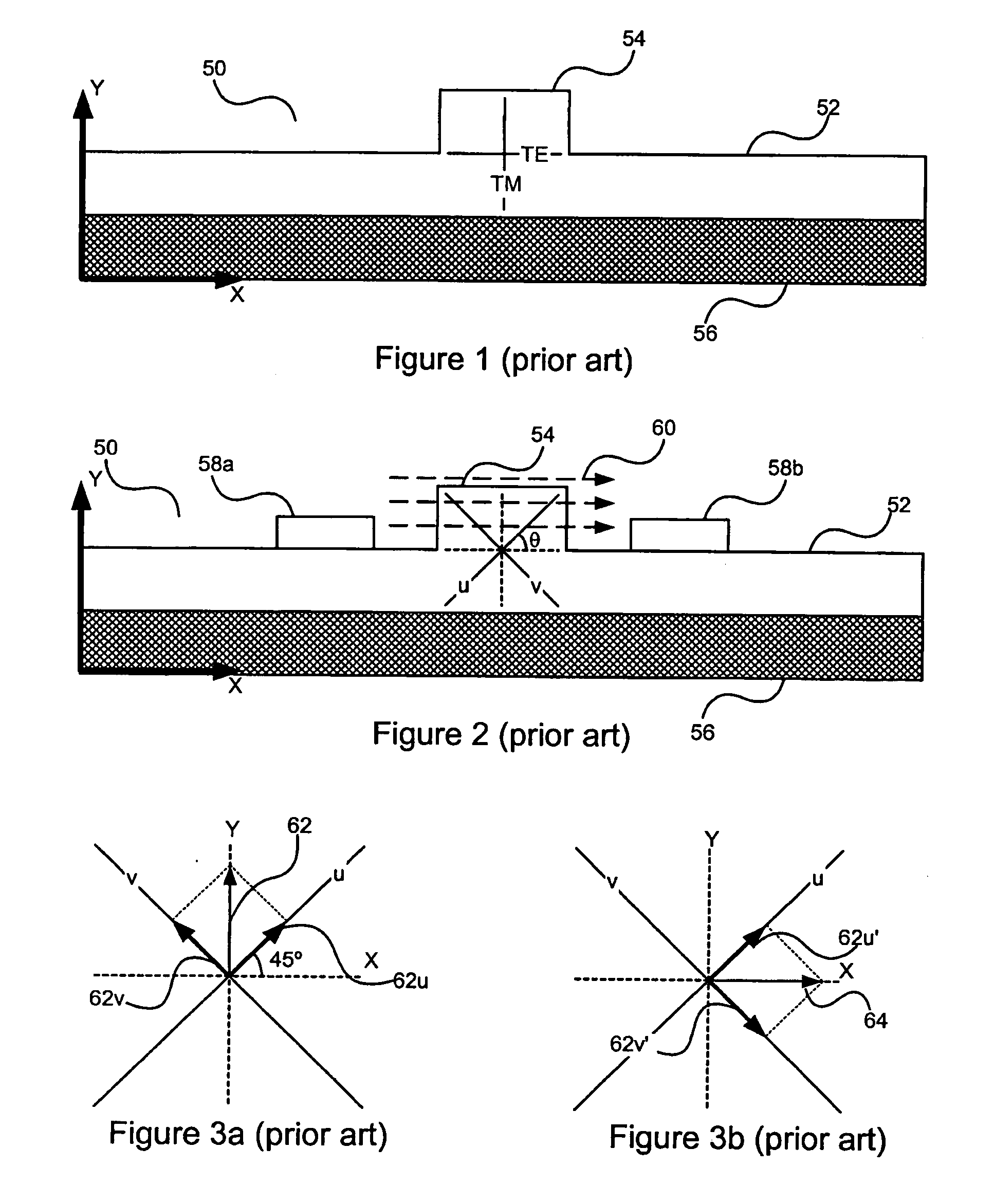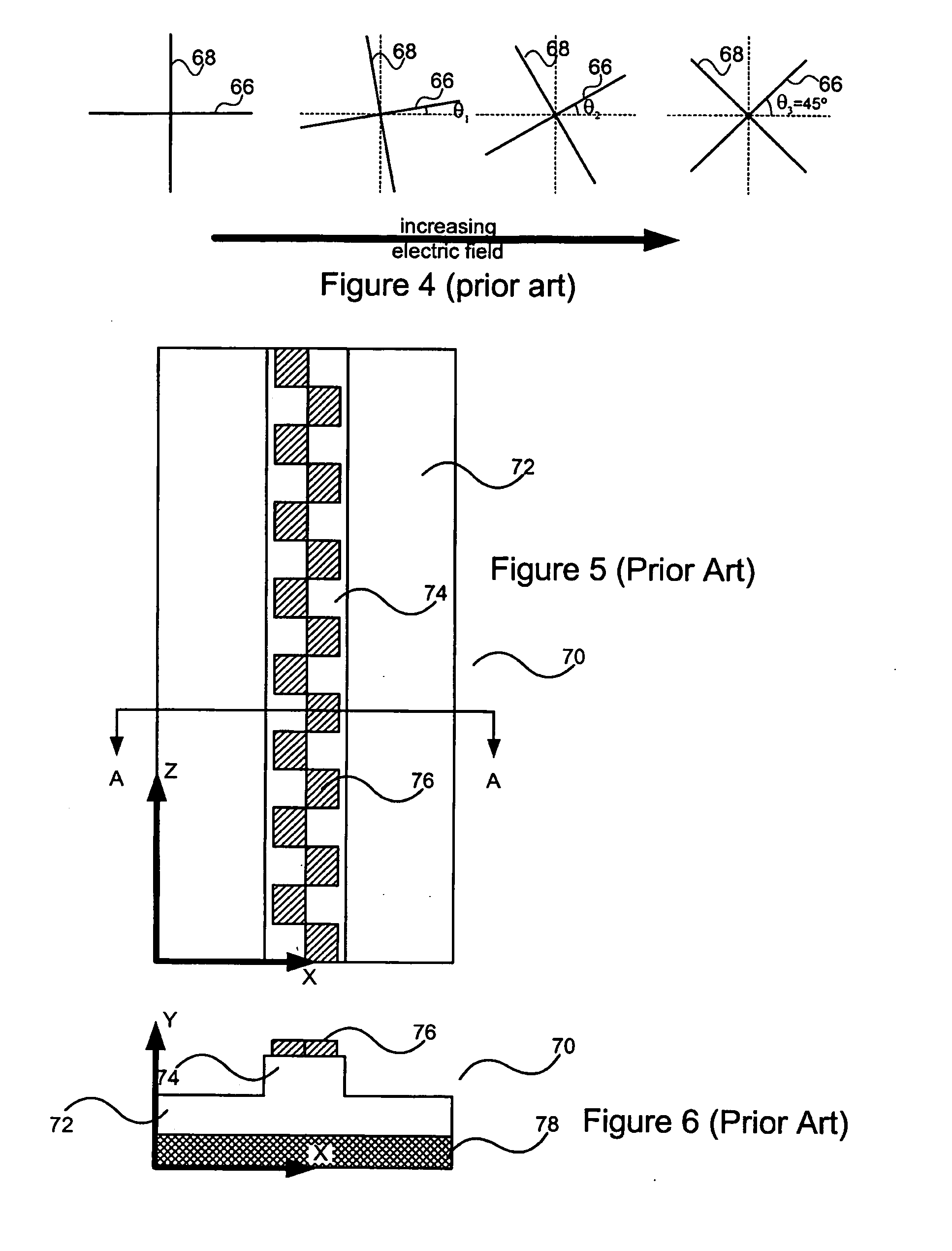Passive method and apparatus for inducing mode conversion
a mode conversion and mode conversion technology, applied in the field of mode conversion inducing optical waveguides, can solve the problems of electrical failure and performance drift, two outputs that are out of phase with each other, and require excessive dc voltag
- Summary
- Abstract
- Description
- Claims
- Application Information
AI Technical Summary
Benefits of technology
Problems solved by technology
Method used
Image
Examples
Embodiment Construction
[0033] In the prior art, modulators using the electro-optic effect and polarization mode converters using inherent birefringence and passive axis rotation are taught. The use of the electro-optical effect on the prior art passive mode converters is not always feasible due to the lack of electro-optic materials in their use. Furthermore, the partial rotation of the waveguide axes in the periodic mode converters does not provide efficient electro-optic modulation.
[0034] In an ideal active mode converter, the principal axes are oriented at 45° from the TE and the TM axes and the birefringence in the principal axes is modulated by varying the electric field. This can be accomplished in three ways. The first is by having zero birefringence at zero electric field. In this configuration, the axes are undefined in the absence of birefringence and the polarization state of light entering the waveguide will be the same as light exiting the waveguide. When an electric field is applied, the de...
PUM
 Login to View More
Login to View More Abstract
Description
Claims
Application Information
 Login to View More
Login to View More - R&D
- Intellectual Property
- Life Sciences
- Materials
- Tech Scout
- Unparalleled Data Quality
- Higher Quality Content
- 60% Fewer Hallucinations
Browse by: Latest US Patents, China's latest patents, Technical Efficacy Thesaurus, Application Domain, Technology Topic, Popular Technical Reports.
© 2025 PatSnap. All rights reserved.Legal|Privacy policy|Modern Slavery Act Transparency Statement|Sitemap|About US| Contact US: help@patsnap.com



